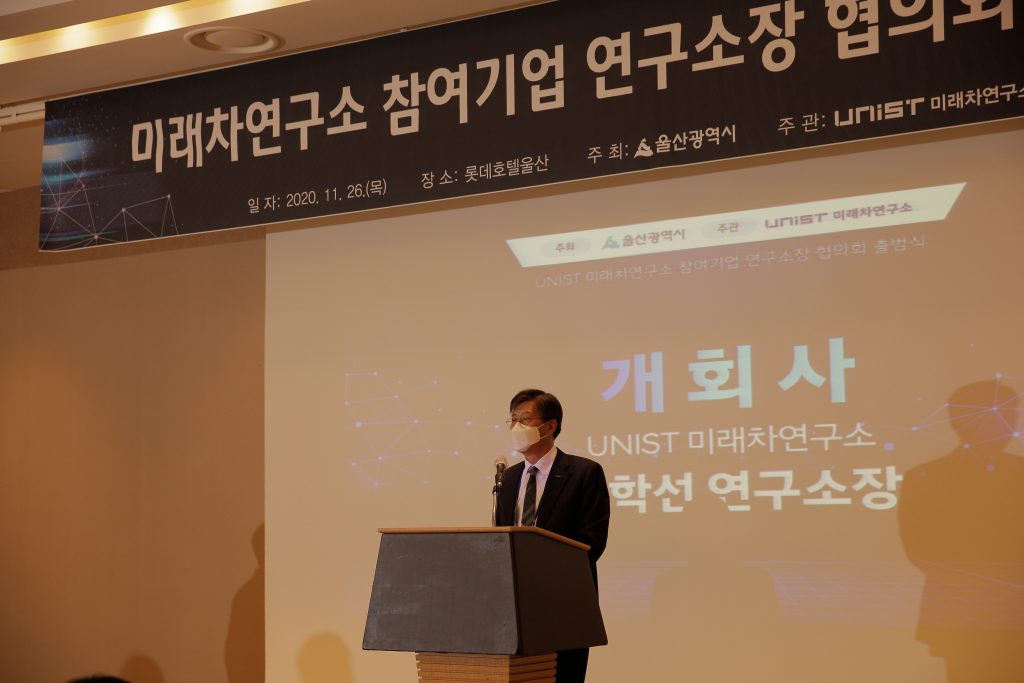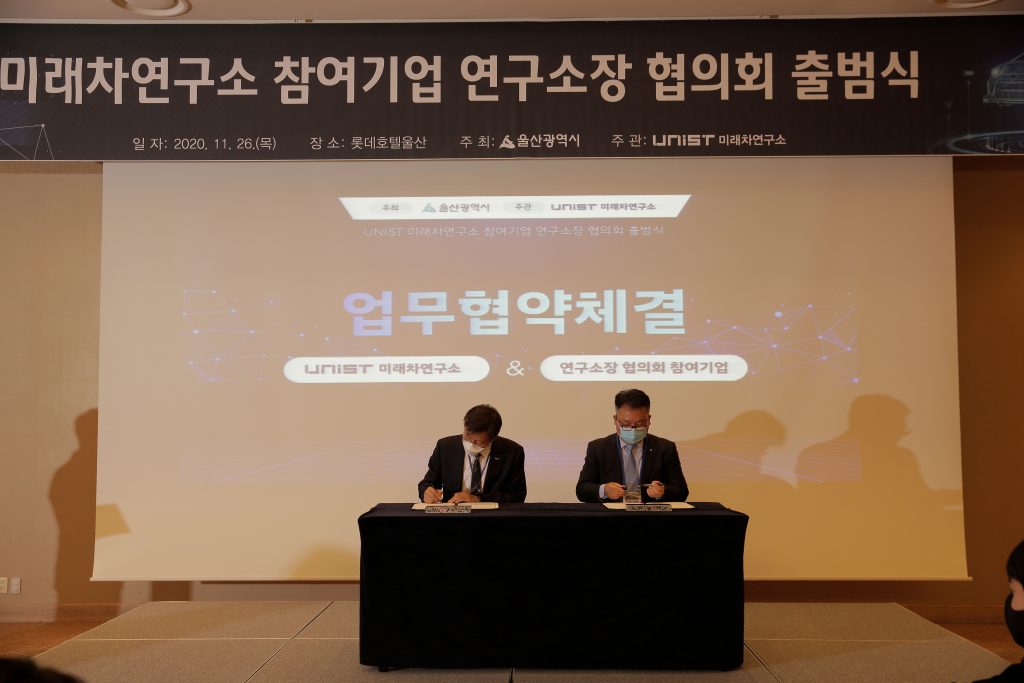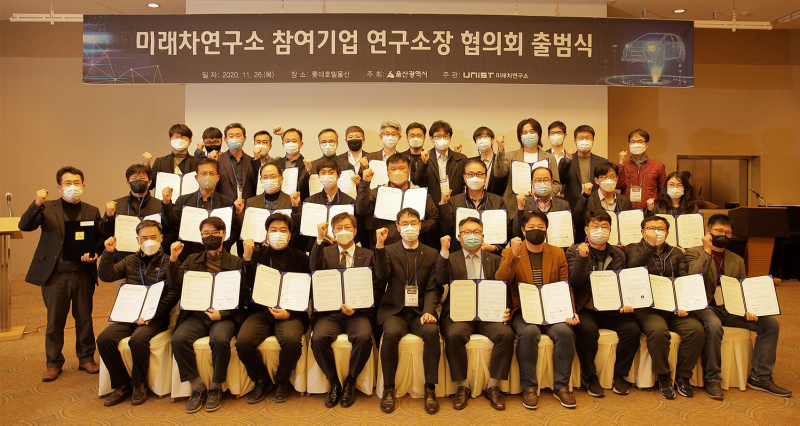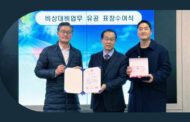On November 26, the UNIST Center for Smart Mobility, in collaboration with Ulsan city, has held the official inauguration ceremony for the participating companies’ directors’ council meeting. The ceremony has been attended by over 30 small-and midium-sized enterprises (SMEs) and venture businesses in Ulsan region.
This inauguration ceremony has been organized in an effort to provide a customized R&D support system based on corporate needs through the establishment of a convergence network system for future mobility. As part of this, UNIST and the participating companies have decided to implement the organic technological cooperation system.

Director Hak-Sun Kim of the UNIST Center for Smart Mobility is delivering an opening speech at the ceremony.
The Directors’ Council for Industry-Academia Convergence Research on Future Mobility consists of 8 technical divisions: Design, Materials, Battery, Components/Modules, Automated Driving, Personal Air Vehicles (PAVs), System Integration, and Mobility-as -a-Service (MaaS).
To this end, UNIST will support efforts to establish development plans for the growth and advancement of future mobility technologies, utilizing specialized research personnel and infrastructure from each of those divisions. Starting with technological development for each division, UNIST will help enhance the academia-industry linkages through corporate support programs. It will also host regularly scheduled technical exchange meetings in order to provide opportunities for the participating businesses and companies to enter a new industy.

The MoU signing ceremony between the UNIST Center for Smart Mobility and the representative of the participating companies.
In particular, the corporate support programs incudes ‘Demand-driven R&BD (Research and Business Development) and Future Mobility Global Hidden Champions. Besides, the regularly scheduled technical exchange meetings will be helping to address the challenges, associated with R&D and commercialization.
Meanwhile, the UNIST Center for Smart Mobility was established in May 2020 to serve as the central institution for sustainable growth and technological advances in the automotive industry. About 52 researchers are working in the center, with the aim of supporting the development of original technologies, industry-academia cooperation, commercialization, and training of manpower.















